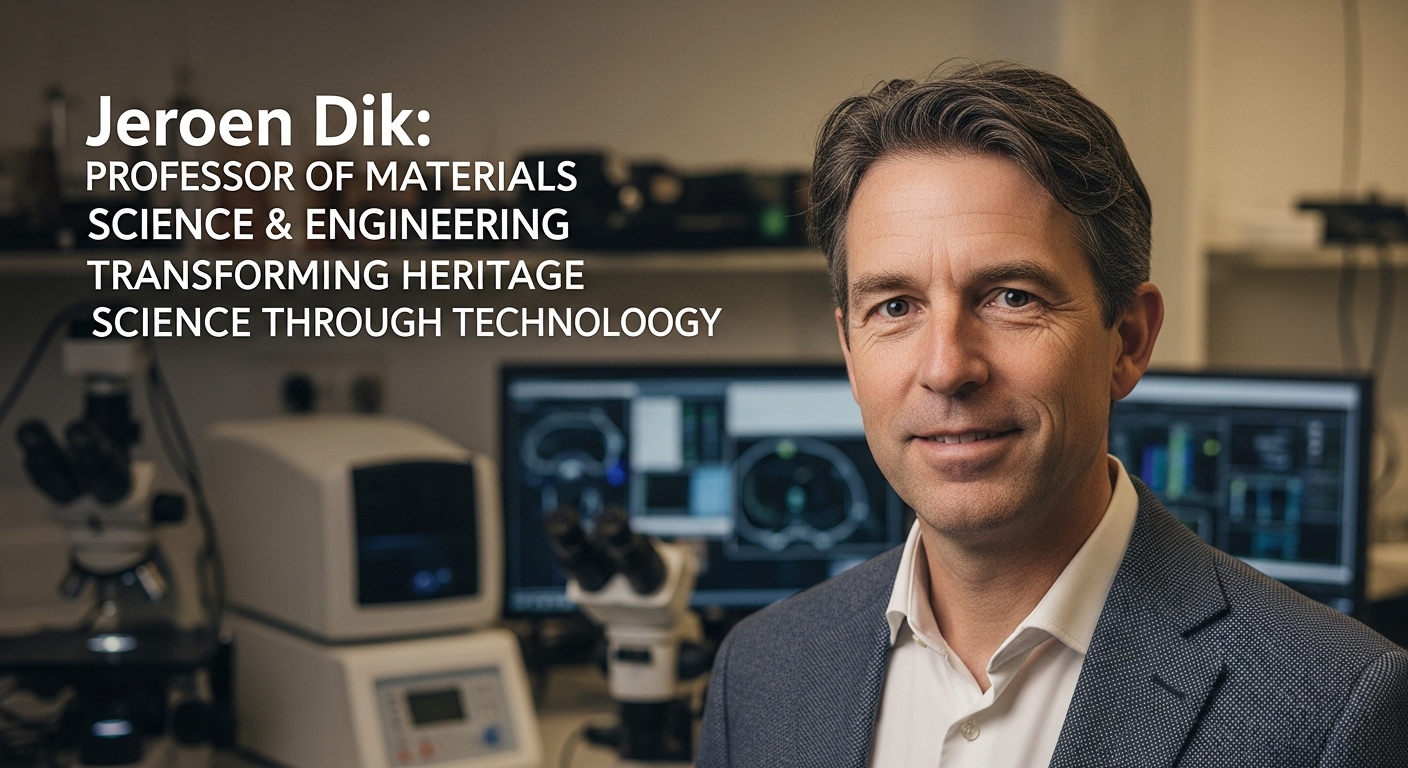Professor Jeroen Dik, a leading figure at Delft University of Technology (TU Delft), is internationally recognized for his groundbreaking work at the intersection of materials science, imaging technology, and cultural heritage research. His innovative methods have reshaped the way scientists, art historians, and museums study historical paintings and artefacts. By combining scientific analysis with advanced 3D imaging, spectroscopy, and X-ray technologies, Jeroen Dik has helped uncover hidden layers in artworks, revealing details that had remained invisible for centuries.
Academic Background and Research Focus
Professor Jeroen Dik works in the Department of Materials Science and Engineering at TU Delft, where he specializes in heritage science, art conservation technology, and non-invasive analytical techniques. His research lies at the intersection of:
-
Materials characterization
-
Analytical chemistry
-
Cultural heritage preservation
-
Advanced imaging technology
This interdisciplinary approach allows him to analyze historical artworks without damaging them — a crucial requirement in museum research.
Revealing Hidden Art: The Technology That Made Jeroen Dik Famous
Professor Jeroen Dik gained international recognition for pioneering the use of macro X-ray fluorescence scanning (macro-XRF) to uncover hidden paintings beneath the surface layers of famous artworks.
1. Macro X-Ray Fluorescence (XRF) Scanning
This technique maps the distribution of chemical elements across a painting. By doing so, it reveals underdrawings, earlier compositions, and altered sections that artists covered during their creative process.
2. 3D Reconstruction and Imaging
His research group creates high-resolution, layered visualizations that museums use to study artistic evolution, pigment degradation, and restoration history.
3. Multispectral and Hyperspectral Imaging
These methods analyze pigments and materials across a wide range of wavelengths, producing molecular-level information without touching the artwork.
Breakthrough Example: Uncovering a Hidden Rembrandt Painting
One of Jeroen Dik’s most celebrated discoveries came through macro-XRF analysis of a Rembrandt painting, which revealed:
-
A hidden portrait beneath the visible painting
-
Earlier design changes
-
Rembrandt’s artistic decision-making process
This discovery made global headlines and demonstrated the transformative power of scientific methods in art research.
Collaboration With Museums and Conservation Institutes
Professor Jeroen Dik collaborates with some of the world’s most prestigious museums and research institutions, including:
-
The Rijksmuseum (Netherlands)
-
The Van Gogh Museum
-
The Mauritshuis
-
International conservation laboratories across Europe and the U.S.
These partnerships allow museums to use TU Delft’s advanced scientific tools to better preserve and interpret their collections.
Contributions to Art Conservation and Preservation
Jeroen Dik’s work plays a crucial role in modern conservation efforts. His research helps experts:
• Identify original pigments and materials
Understanding pigment composition helps determine appropriate restoration techniques.
• Monitor degradation and aging effects
Material breakdown can be tracked before visible damage appears.
• Prevent irreversible damage during restoration
Non-invasive techniques eliminate the need for sampling.
• Reconstruct the creative evolution of artists
Hidden sketches and earlier compositions reveal the artist’s development process.
His findings not only enhance scientific knowledge but also deepen public understanding of historical masterpieces.
Publications and Thought Leadership
Professor Jeroen Dik has authored numerous peer-reviewed articles, chapters, and technical reports focusing on:
-
Art imaging technologies
-
Pigment analysis
-
Cultural heritage materials
-
Innovations in non-destructive testing (NDT)
-
Data visualization in heritage science
His research is widely cited in both scientific and art-historical fields, bridging the gap between disciplines.
Teaching and Mentorship at TU Delft
As a professor, Jeroen Dik is deeply involved in educating the next generation of engineers and heritage scientists. His courses and supervision cover topics such as:
-
Materials characterization
-
Analytical methods in engineering
-
Cultural heritage technology
-
Scientific research methodology
He mentors students working on interdisciplinary theses and encourages collaboration between engineers, chemists, physicists, and art historians.
Awards and Recognition
Professor Jeroen Dik has received significant recognition for his innovative contributions to cultural heritage research. His work has been featured in:
-
International scientific journals
-
Museum exhibitions
-
Documentaries and media reports
-
Global art restoration projects
His role as a pioneer in the use of macro-XRF scanning has solidified his reputation as one of the leading scientists in the field of heritage technology.
Future of Jeroen Dik’s Research
The future of Professor Dik’s work is geared toward expanding high-resolution digital analysis and increasing global access to advanced imaging technology. Emerging research directions include:
-
Portable macro-XRF scanners for on-site museum use
-
Machine-learning tools to interpret pigment data
-
3D digital twins of paintings
-
Expanded hyperspectral imaging capabilities
These innovations will continue to transform both art conservation and scientific visualization.
Conclusion
Professor Jeroen Dik stands at the forefront of modern heritage science, merging materials engineering, advanced imaging, and cultural preservation into a single powerful field of study. His pioneering discoveries — especially the use of macro-XRF to uncover hidden layers in masterpieces — have revolutionized how museums interpret and protect historical art. As technology evolves, his work will continue influencing conservation science, engineering research, and global cultural heritage for years to come.
